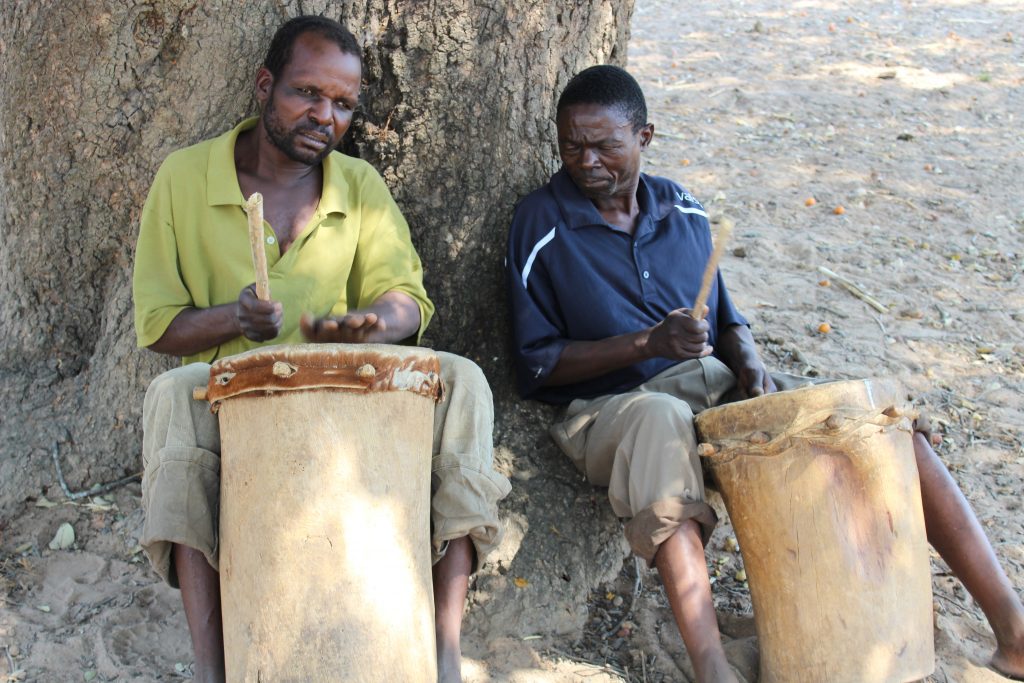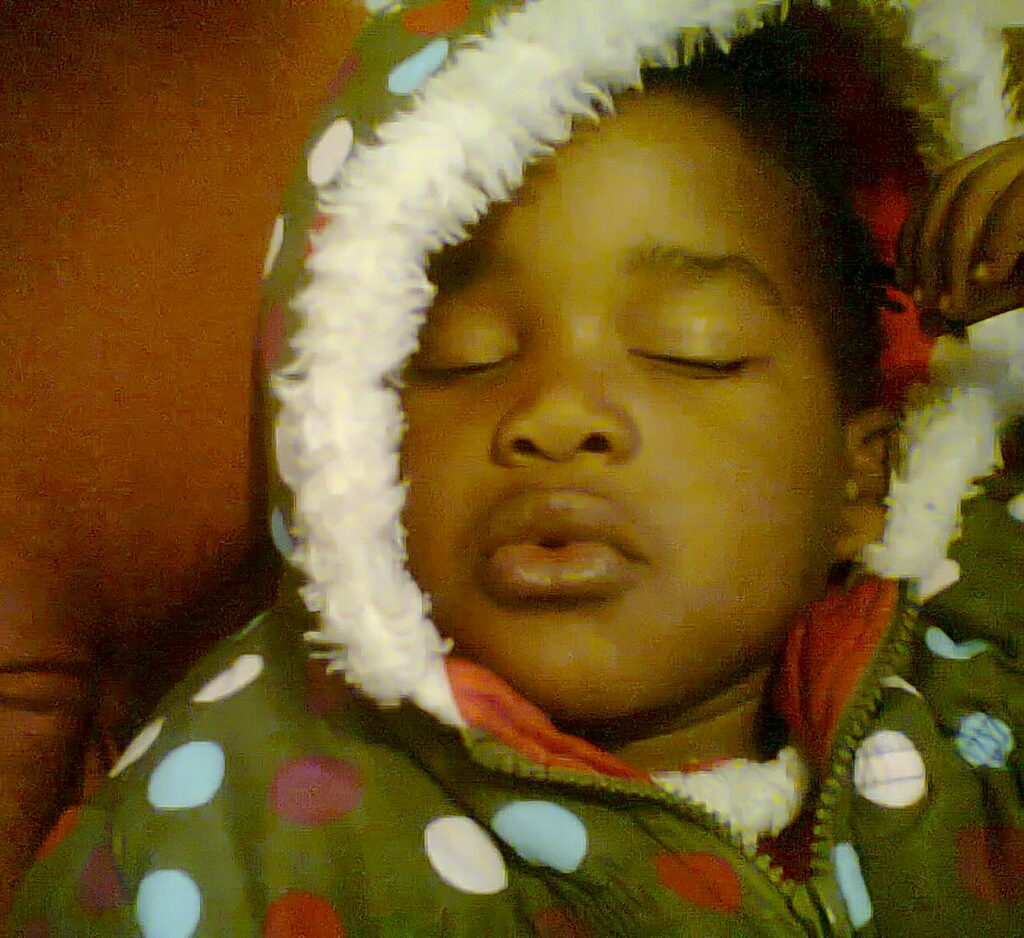Chipari/ Chirabwe / Chirahwe/ Chirapi
The above are all Shona words for ‘riddle.’ A riddle is, simply put, a trick question. Zvirahwe put to test one’s understanding of the language, environment or setting from which the question or statement is constructed. Below are riddles, some of which I have used to reveal traditions and ways of the Shona. Without this understanding, the chirahwe ceases to amuse.
Worried Your Child Isn’t Ready for the Grade 7 Shona Exam?
Get ahead now — join our January 2026 revision program waitlist.
1. Amai ngwe kuchena, mwana ngwe kuchena.
Guyo nehuyo (Grindstones)
These are traditional implements still used in the scope of daily life today. The larger stone which forms the lower platform is known as guyo. The guyo pictured above (the featured image for this post) has a deep indentation to hold material to be ground up by the smaller stone. This smaller stone is known as huyo. Before grinding mills, grindstones were commonly used for grinding seed into meal. With maizemeal being more common, the grindstones would more often be covered in white meal. The two stones are interdependent and one is smaller than the other, hence the reference to amai (guyo) and mwana (huyo).
2. Amai vangu vanozvara asi havafukidze vana.
Manhanga (Pumpkins).

Pumpkins grow on vines that extend on the ground’s surface, rather than underground. These large plants will grow on the surface up until time for harvest and are not covered underground. The word fukidza means cover.
3. Ane mhanza ngaarohwe.

Ngoma (Drum)
Traditionally the drum is made of wood – a piece of trunk taken from specific tree types. The hide or skin of an animal is stretched over the end of the wood to make the drumhead. Hair from the hide compromises the drumhead’s ability to vibrate, hence it is removed before the skin is attached.
The drumhead is likened to a bald head (mhanza).
4. Baba vangu vanoramba vachifamba vasinganete.
Rwizi/ Rukova (River)
The flow of water in a river seems unending.
Children growing up in urban areas today will probably not be as familiar with rivers as much as those that grow up in rural areas. Rural children even swim and play in rivers while herding cattle.
5. Baba vanotsetsa ndiro asi matsetswa acho handiaoni.
Mhanza (Bald head)
Traditionally, plates were carved out of wood. It is not uncommon to find these in use today. Like drums, only specific tree types are used. A bald head is likened to a smoothly carved plate. Tsetsa means ‘carve’ and matsetswa are wood shavings.
6. Batai sekuru vobve kudoro.
Betepeswa/ Shaveshave (Butterfly or Moth)
Did you know that butterflies and moths do not fly in straight lines? According to sciencefocus.com, the swooping and tumbling of a flying butterfly is ‘actually an evolutionary tactic that makes it harder for any would-be predators to predict the insect’s flightpath.’
It is this flight pattern that is likened to a drunken stagger.
7. Bhuru rangu raenda kunotiva rikadzoka raonda.
Sipo (Soap)
The word tiva means ‘immerse in water’ or ‘bathe.’ In communal farming areas, livestock is periodically dipped in communal plunge dip-tanks. This is done to control ticks and tick-borne diseases.
When immersed in water, soap will gradually dissolve.
8. Chasimudza ishe padare.
Kuenda kuchimbuzi (Need to go (to the toilet))
Even a chief (ishe) presiding over (village) court proceedings would have to be excused when nature calls.
9. Chidembo tamba tamba muswe ndakabata.
Badza (Hoe)
Kusakura is a key element of the cereal crop farming cycle. This manual weeding/ tilling using hand hoes is commonly practised by small scale communal farmers. In this riddle, kusakura is likened to someone gripping a skunk by the tail, and the skunk wiggling in an attempt to free itself.
10. Chidyamafuta chisingakori.
Banga (Knife)
A knife is used for cutting fatty cuts of meat. Long term consumption of a high-fat diet is generally associated with weight gain.
11. Chikomana chariga ishe padare.
Hope (Sleepiness)

Riga means ‘topple over” or ‘knock down.’ Sleepiness sometimes causes one to unexpectedly nod off, no matter how hard they try to fight it. This could be anybody – even the chief, and could happen anytime, anywhere – even when court is in session.
12. Chikomo chinopfungaira mhute.
Sadza
Sadza is commonly served steaming hot and looking like a small mound. Mhute means ‘mist.’
13. Chisingaome.
Rurimi (Tongue)
Interesting Fact
Food has to be moistened by saliva before it can be recognised by the taste buds.
The tongue is always moist with saliva. We all need saliva for:
- chemical digestion,
- chewing and swallowing,
- as a lubricant to allow for smoother speech, and
- to dissolve the food and allow the tongue to taste.
14. Chitima chomusango.
Zongororo (Millipede)
Interesting Fact
The term millipede comes from two Latin words – mil, meaning thousand and ped meaning feet. However, no known species has 1,000 legs or more.
Millipedes are long black bugs with two pairs of legs per body segment. They live in leaf litter of forests. Chitima is the word for railway train.
15. Danda ravana rati kutsotso.
Mujuru/ Muchenje (Termite)
Tsotso is the word for dry twigs. Termites destroy wood at a fast pace, turning a log to dry twigs.
16. Dande mutande rakapedza nyika.
Denga (The sky)
The sky is vast and endless. Your view of the sky is the same from any place in the world.
17. Harahwa yakagara padavi.
Mukoko (Beehive)
Traditional forms of beekeeping involve providing protection for a bee colony in exchange for periodic harvests of honey and wax. These traditional hives could be in the form of a clay pot, tree bark, bucket or basket placed on a tree branch (davi).
18. Imba yaamai vangu inomira nebango rimwe.
Hwowa (Mushroom)
A mushroom stands on a single stem and its shape resembles that of the traditional round hut.

19. Imba yaamai vangu isina musuo/ mafafitera.
Zai (Egg)
Birds lay eggs from which chicks hatch. A chick grows inside the egg which has no obvious opening. Fafitera is the word for ‘window.’
20. Jira ramai vanhu risingaperi kupetwa.
Denga (The sky)
The sky is vast and endless. Your view of the sky is the same from any place in the world.
21. Kachembere kekwedu kanozvuva sanzu nokumashure.
Tsono neshinda (A needle pulling thread)
22. Kakomana kanoridza toropito kakafenengara.
Gurwe (Edible sand cricket)
The Gurwe Song
Munguva yezhizha, kana tosakura, makurwe anoriraaa. Vapwere mumisha, votora mapadza, kunochera makurweeee.
.
Toropito is the name for a musical wind instrument. Fenengara is ‘to stand with stomach drawn in.’
A cricket makes a chirping sound when it rubs the upper and lower surface of its wings together. While doing this, it also holds its wings up and open.
23. Kasikana kakasunga chiuno.
Zingizi (wasp)
Wasps are a diverse group, with tens of thousands described species around the world, and a great many more as yet undescribed.
Tying the waist gives it a narrower look. A wasp is a narrow-waisted insect.
24. Katsoka kari apa kane zvinhungo zvitete.
Vhudzi riri mumusoro (Hair on one’s head)
Tsoka is the word for ‘dense forest.’ Nhungo is the word for ‘roof pole.’ The traditional hut has a grass-thatched roof supported by wooden poles.
The riddle likens the hair on one’s head to a forest dense with thin trees that are used as roof poles. The indigenous black people of Zimbabwe have afro-textured hair.

25. Kota kota mubanimo.
Murau/ Dhibhu/ Dhibhura (Whip-snare)
Kota is an ideophone of ‘bending forwards,’ and is related to the word kotama. ‘Mubanimo‘ is ‘mubani imo.’ Bani is the word for ‘veld’ or ‘uncultivated grassland.’
Snares are trapping devices used for capturing small animals. They are predominantly used to capture animals for meat and hides. The most basic design of a snare has a cord with one end attached to a branch on a tree. The other end is attached to an object on the the ground such that the tree branch is pulled to bend downwards.

The riddle is in reference to this bending tree branch.
26. Kuenda humbangu, kudzoka humbangu.
Gonhi/ Sasa (Door)
Humbangu is an ideophone of ‘banging.’ A door opens and closes noisily.
I, however, am not too convinced on the opening part. Throwing a door open isn’t exactly banging it.
27. Kugara makashama dzenyu inharo here?
Mhino (Nose)
The nose is the most protruding part of the face, and has two open holes called nostrils.
28. Kunaka wakanaka, asi chikungu chimwe chete chokugara muvhu.
Gurwe (Large edible sand cricket)
In Zimbabwe, grasshoppers, locusts and sand crickets are a common protein source. Sand crickets burrow and live underground, usually one per hole. Found mostly during the rainy season, they are an agricultural pest as they feed on young plants. They are collected by digging, or using torches at night. They are commonly served fried or grilled.
29. Kunakirwa kwaVaSadzi mumba umu.
Rurimi (Tongue)
While we need food to survive, no meal would be much of an experience without our ability to taste.
Interesting Fact
Taste is a surprisingly complex sense that science is still striving to fully to understand.
The tongue is the organ of taste. ‘Mumba umu‘ is in reference to ‘in the mouth.’
30. Kwatsva sora kukasara bhandi.
Nzira (Path/ Road)
I don’t think this one is much of a riddle. After a veld fire, a path or road remains clearly visible when most, if not all, of the surrounding vegetation has burned.
You sure can learn a thing or two from Shona riddles after all!
A special thank you to my daughter Chiedza K. for the lovely artwork and beautiful vocals.


please can you answer the following( zvirahwe)
(1)dehwe mukwindingwi
(2)kwatsva sora kukasara miti miviri
(3)nzira mbiri dzinoenda mugomo
(4)kaharahwa kanopfeka bhachi nerutivi rumwechete
Thanks Sharoon for stopping by.
I did some quick research and here is what I got for you.
May I have answers to these riddles.
1. Imba yababa vangu imire negumbo rimwe ……
2. Zvidziva zvazvapwa makavi tonyikepi …..
3. Zvikari zviviri zvinoburana ….
4. Mombe yababa vangu inokuma yaona musha …..
5. Zindakupa zindakutorera …..
6. Ndaenda ndakadai ndikadzoka ndakadai ….
7. Chidhidhi kuteta hundi moyo uri kumakoto ……
8. Ndaenda ndirere ndikadzoka ndamira …..
9. Mbuya yekwedu ine mazino maviri ….
10. Tsauka ndikudhinde ……
3 (must be zvikara not zvikari) I covered in another post – Zvirahwe| Riddle me these 30 Shona riddles. Answer is ‘minzwa.’
1 is similar to number 18 of this post but I have also seen other sources say the answer is ‘ngoma.’
5 I covered in another post – Zvirahwe| Riddle me these 30 Shona riddles. I have also seen other sources say the answer is ‘dura.’
For 10, the riddle should read ‘Tsauka ndikundinde.’ My dictionary says ‘ndinde’ means something that is never-ending e.g. operation, sickness, process, work etc. For example, One could say ‘Urwere hwake indinde.’ ‘ndinde’ is also an ideophone of snapping e.g. the reverberation of a bowstring when an arrow is fired.
Thank you very much keep up the good work u are helping us primary children by putting ZVIRAHWE on the web
Thank YOU
Thank you Tadiwanashe. Good to know I have been of help to you!
Ndibatsireiwo
1. Tsauke ndikudhinde
2.Tandi ndebvu akadziwanepi
Ndibatsirewo Vakuru vekwedu vanogara vakasunama
Mutumba unorira usina uta
Unyiriri hunoenda gova
Kupfeka kwavakuru vekwedu vanenge vaonpenga
Vakomana gumi vakapfeka ngundu dzamapfupa
Vana vaamai vangu vose vane musoro mitema
I liked this very much thank you
You’re welcome, Hazel. Glad you liked it.